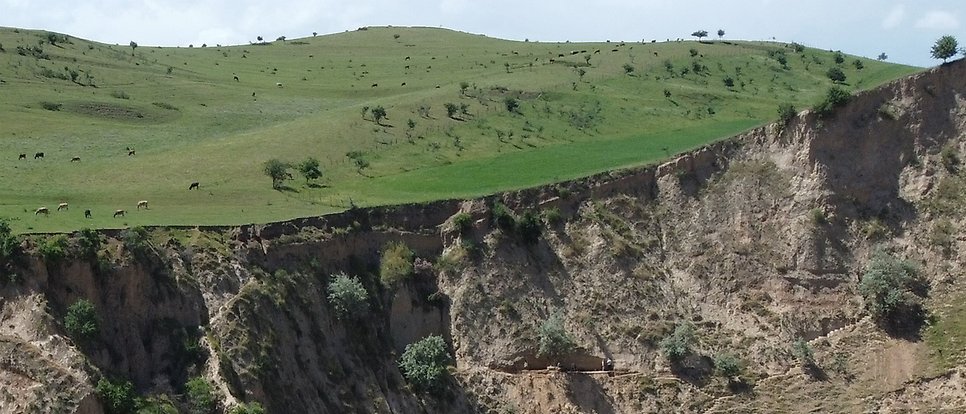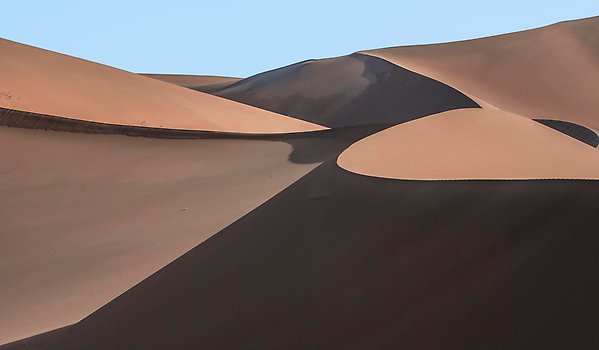Ancient climates, humans and landscape

The ancient climate had a major impact on humans. The climate determined settlements, movement patterns and which crops to grow. The opposite is also true: people influence the environment they live in.
Description
How do we know how Earth’s climate changed before we made direct observations of these changes? How did these changes affect the course of human history and evolution? And how did climate and landscape interact to produce the world we see today? Here we attempt to answer these questions, and in particular use archives of wind-blown sediments covering the last 1000s of years to 100s of millions of years to do so.
Our research
Past Arctic and high latitude climate
High latitude areas (including Sweden) are currently changing rapidly, as a result of anthropogenic climate warming. This is especially true in the Arctic. Past climate records from these regions are urgently needed to understand the impacts and causes of climate changes in these vulnerable regions. Our research uses wind blown sand dune and dust deposits (called ‘loess’), as well as ice cores, to understand the late and post Ice Age climate history in Sweden, Finland, Greenland, Svalbard, Siberia and Canada.
%20(3)%20(2)%20Past%20Arctic%20and%20high%20latitude%20climate.jpg)
Mineral dust and Ice Age climate in Europe
Wind-blown mineral dust (finer than sand) is a major part of the climate system. However, the role that this dust plays in climate change is unclear, and past records of dust and climate are needed to resolve this. In doing so this allows better modelling of future climate change. We ae particularly interested in how dust plays a role during very large and abrupt climate changes during the last Ice Age.
%20(2)%20(3)%20(2)%20(2)%20(2)%20Mineral%20dust%20and%20Ice%20Age%20climate.jpg)
Ice Age climate and ancient humans in Asia
The Ice Age coincides with the rapid evolution and dispersal of multiple humans. Yet, the history of the populating of Europe and Asia from migration human groups out of Africa remains poorly known. This is a major gap in the story of our species. Using vast deposits of wind-blown dust in eastern Europe and central to eastern Asia (loess) that stretch back millions of years we are unravelling this story, as well as the influence of Ice Age climate change on these peoples.

Climate in an ancient Hothouse world
Earth’s ancient climate has swung between warm hothouse periods, and cold ice ages. During the late Permian and Triassic (c. 255-200 million years ago) the world was characterized by extreme heat and vast dusty deserts. The mudstone rocks exposed along the southwest of coast provide us unique insight into this vastly different world, and how climate changes were driven at the dawn of the dinosaurs.
%20(2)%20Climate%20in%20an%20ancient%20Hothouse%20world.jpg)
Evolution of Earth’s great rivers
Rivers play a key role in the evolution of landscape and climate. They carry vast amounts of eroded sediment to the sea, acting as the conveyor belts of Earth’s sediment cycle. But how long have these rivers existed? And what drove their formation and evolution? Here we apply a range of age-dating and sediment provenance analyses to understand the history of some of the world’s great rivers.
%20(2)%20Evolution%20of%20Earth%E2%80%99s%20great%20rivers.JPG)
Ancient East Asian climate and landscapes
The Asian monsoon system sustains 2/3rds of the worlds population, and the Tibetan Plateau is the largest high elevation on Earth to have existed for 100s of millions of years. Together, the climate and landscape of Asia has determined the course of Earth’s climate evolution over the last 60 million years. Here we use multiple methods such as sediment sources, age dating, and climate proxy analysis to unravel how Asian climate and landscape co-evolved, and how this in turn created the climate of Earth today.
%20(3)%20Ancient%20East%20Asian%20climate%20and%20landscapes.jpg)
